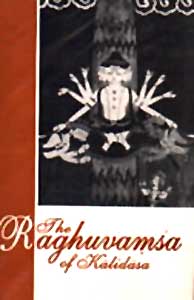 Classical poetry in Sanskrit literature can absolutely and blindly be referred to as the most prolific, most scholarly, most erudite and the most exhaustively-researched work ever to have been accomplished in ancient India. The amount of effort and exertion put in by authors like Kalidasa or Sriharsha, bear eminent proof in the invention of the verse metres or other poetic specifications still being espoused. Every line emoted a profound sense of pathos, of exaltation or even satire to their most bitter extent; umpteen commentaries on the classical form of poetry have been published ever since, that perhaps can only be envisaged by the limit of Sanskrit literature and attempts at its revival.
Classical poetry in Sanskrit literature can absolutely and blindly be referred to as the most prolific, most scholarly, most erudite and the most exhaustively-researched work ever to have been accomplished in ancient India. The amount of effort and exertion put in by authors like Kalidasa or Sriharsha, bear eminent proof in the invention of the verse metres or other poetic specifications still being espoused. Every line emoted a profound sense of pathos, of exaltation or even satire to their most bitter extent; umpteen commentaries on the classical form of poetry have been published ever since, that perhaps can only be envisaged by the limit of Sanskrit literature and attempts at its revival.
Classical poetry pertains to that section of verse developed approximately from the 3rd to 8th centuries. Kalidasa is the foremost example coming under this Classical category. An impressive characteristic in this particular Sanskrit literary tradition is that sometimes poets had the habit to flaunt their technical adroitness employing highly structural word-games, like stanzas that read the same backwards and forwards, words that could be split in different ways to create different meanings, sophisticated metaphors, and so forth. This distinctive style is referred to as Kavya. An authoritative example under this Sanskritic literary genre is the poet Bharavi and his magnum opus, the Kiratarjuniya (6th-7th century). Yet another luminary in this verse category, Magh is respected for his epic poem (Mahakavya) Shishupala Vadha, the 20 cantos of which are based upon the Mahabharata episode where the insolent king Shishupala is beheaded by Krishna`s sudarshana chakra.
The greatest works of Classical Sanskrit poetry in this period are the five Mahakavyas, or interpreted into English as "great compositions", comprising: Kum?rasambhava by Kalidasa, Raghuvansa by Kalidasa, Kiratarjuniya by Bharavi, Shishupala Vadha by M?gha and, Naishadha-Charita by Sriharsha. However, a specific bunch of scholars also include the Bhattikavya as the sixth Mahakavya. Other major Sanskritic literary works from this period include Kadambari by Banabhatta, the first Sanskrit novelist (6th-7th centuries), the Kama Sutra by Vatsayana and the three shatakas of Bhartrhari.



















